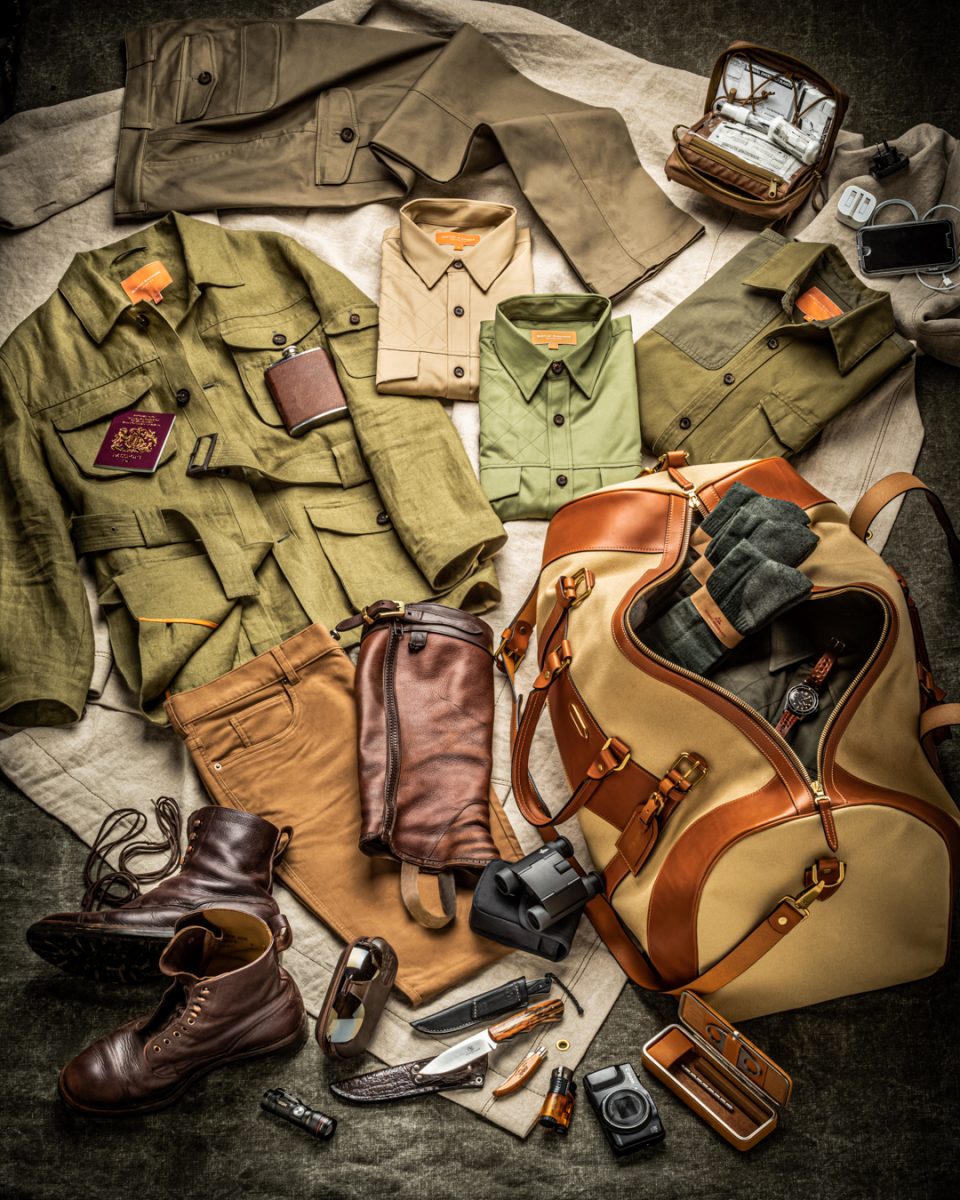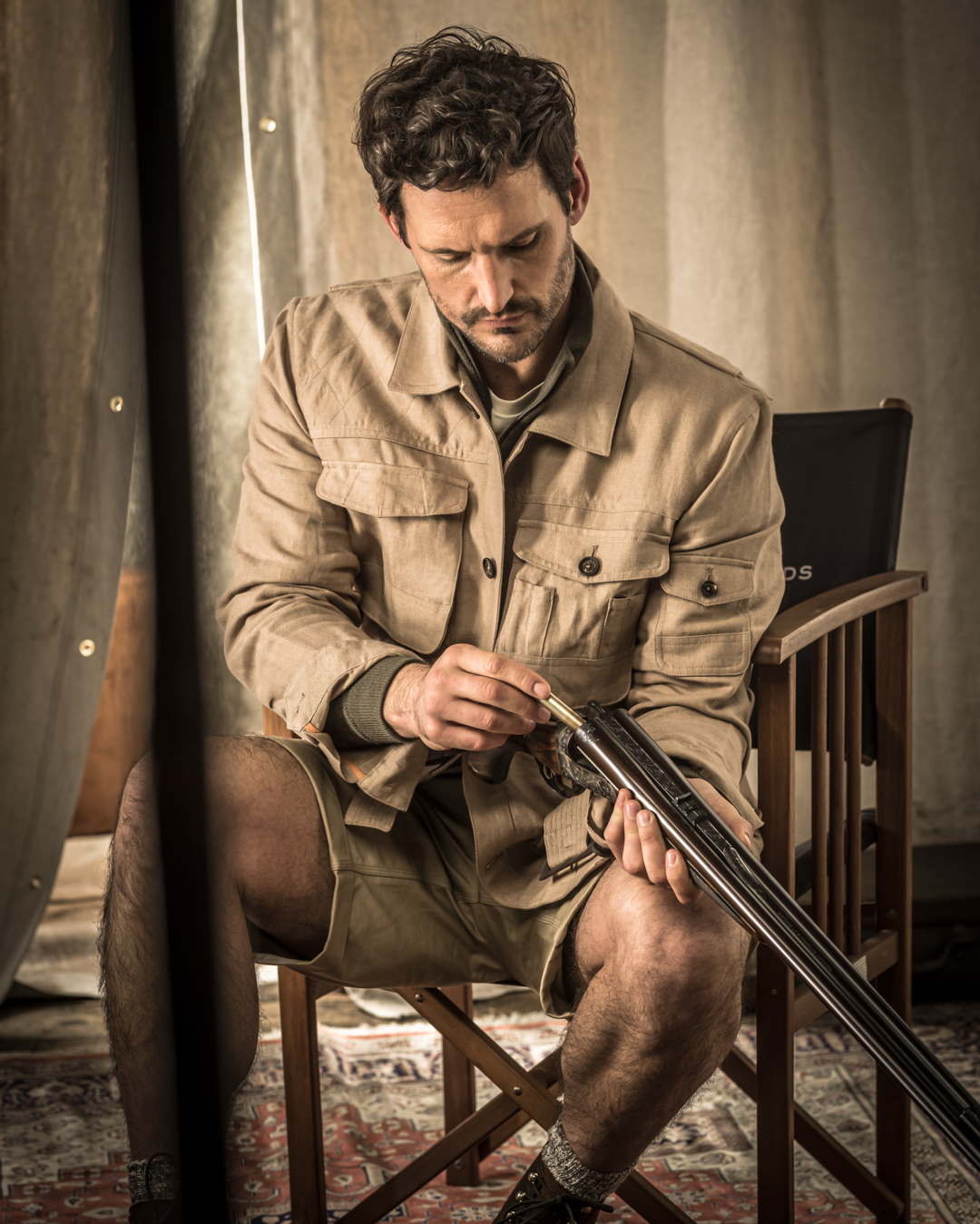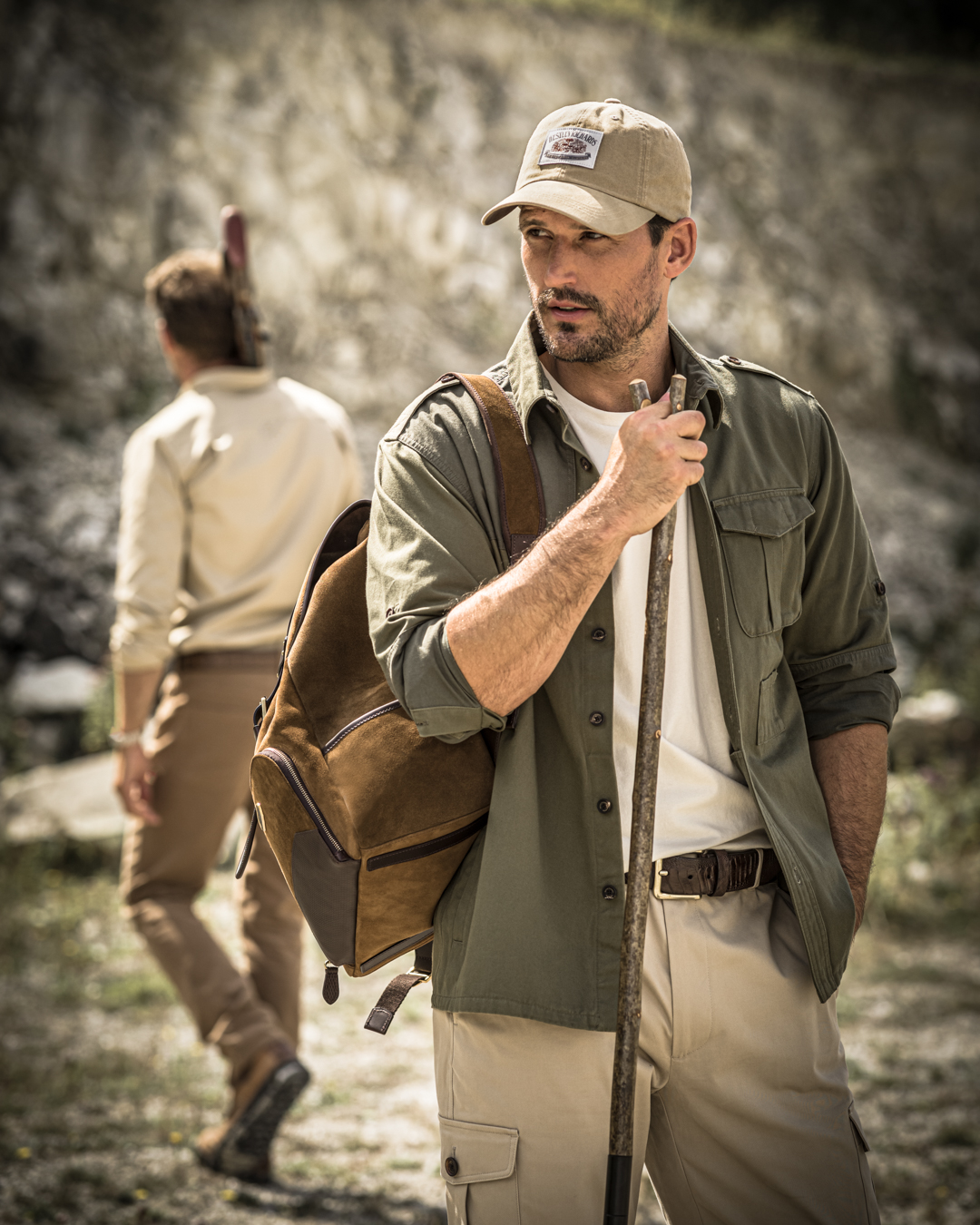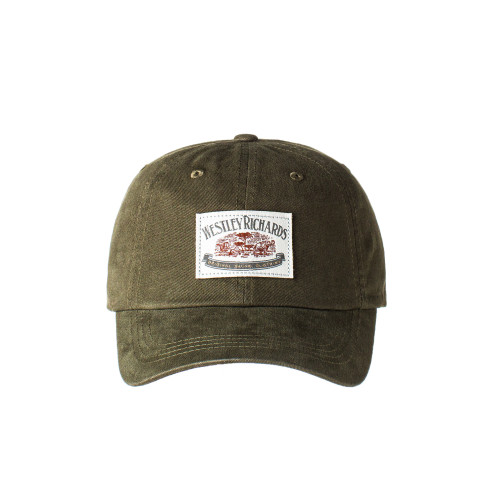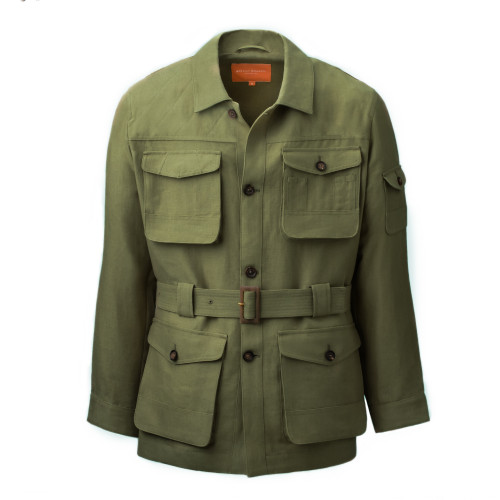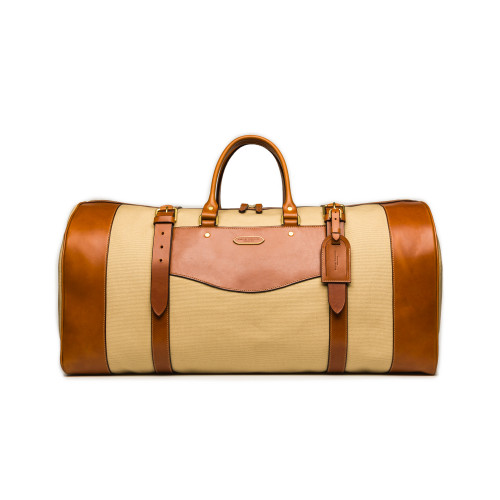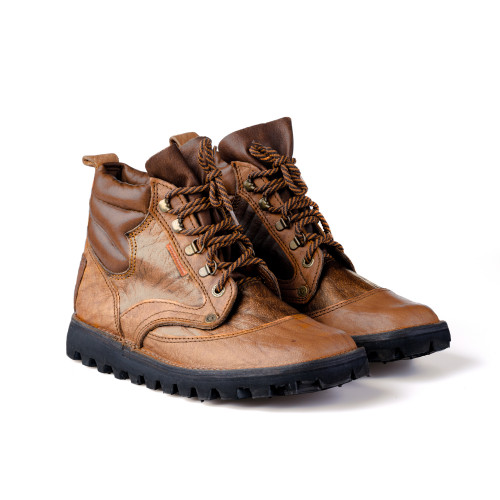Three months seems like a long way in the future but it isn’t. There are vaccinations to book, flights to arrange and kit to pack. The elephant rifle is taken care of. Michael will be taking the Westley Richards .470 NE drop-lock he had them build a decade ago.
I will be bagging ducks for camp meat and sport in the down-time and for that will take my trusty old Thompson 12-bore hammer gun. However, my other main interest when not carrying a rifle is the chance to take photographs and record the hunt, the place, the characters and the action.
The trip is really a focused elephant hunt this time. I have hunted the Okavango Delta before; in 2007. Back then the actual Delta was open and we hunted from a camp called Splash. Michael was seeking a big elephant bull, with me knocking over red lechwe, impala and warthog whenever we needed camp meat.
Today, the political landscape is different. The Delta is closed to hunting but the areas bordering it are open, with elephants regularly venturing out to raid crops and otherwise cause a nuisance to the villagers that make their home in the bush.
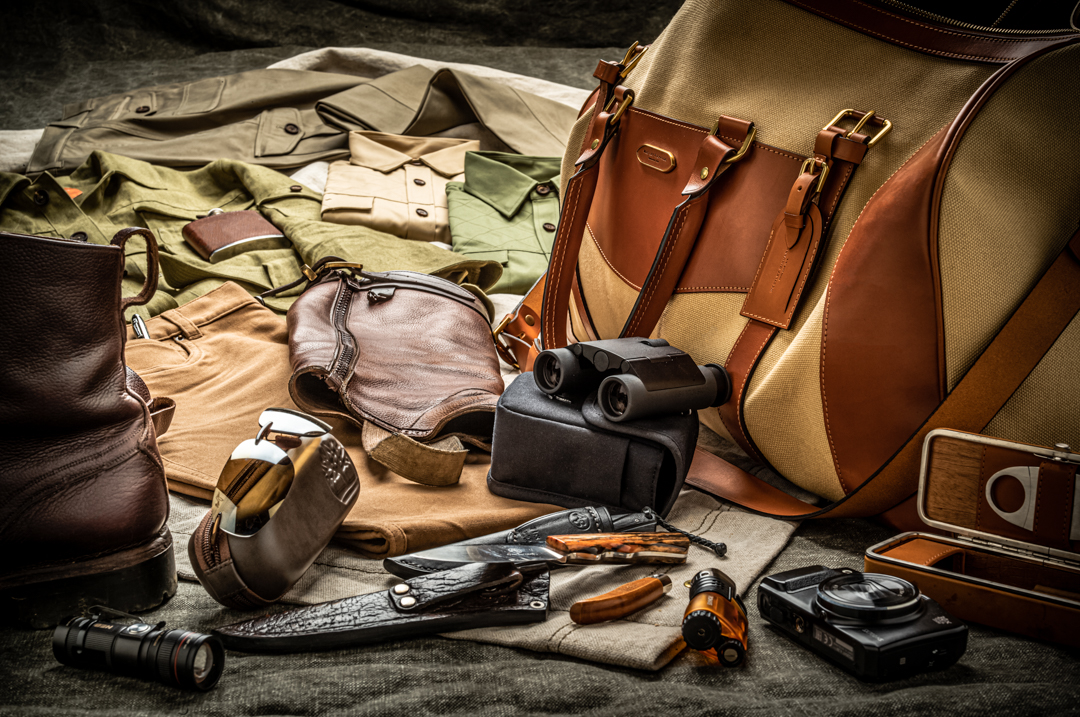
May is the very beginning of the winter in Botswana. We should expect sunny, clear days, with temperatures getting up as high as 35 degrees in the afternoons and dropping to 15 degrees at night. The rains should be easing off, with the vegetation starting its annual metamorphosis from lush green to desiccated brown.
Botswana, known as Bechuanaland when it was a British Protectorate, is a member of the British Commonwealth. It is totally land-locked and seventy percent of the country is covered by the Kalahari Desert.
The Okavango Delta is an oasis of greenery quite unlike anywhere else in the world and teeming with wildlife. The presence of less attractive critters necessitates several inoculations before travelling, including hepatitis A, typhoid, polio, yellow fever and meningitis.
Elephant hunting was banned in 2014 and reinstated in 2019, with only 400 licences granted annually since, despite Botswana holding the largest elephant population in Africa, estimated at over 130,000 animals.
The reinstatement of hunting followed an observable increase in human-animal conflict, rising animal numbers and falling revenue during the ban (50% of hunting fees go directly to Community Based Organisations). Sport hunting is strictly controlled and carried out under government supervision.
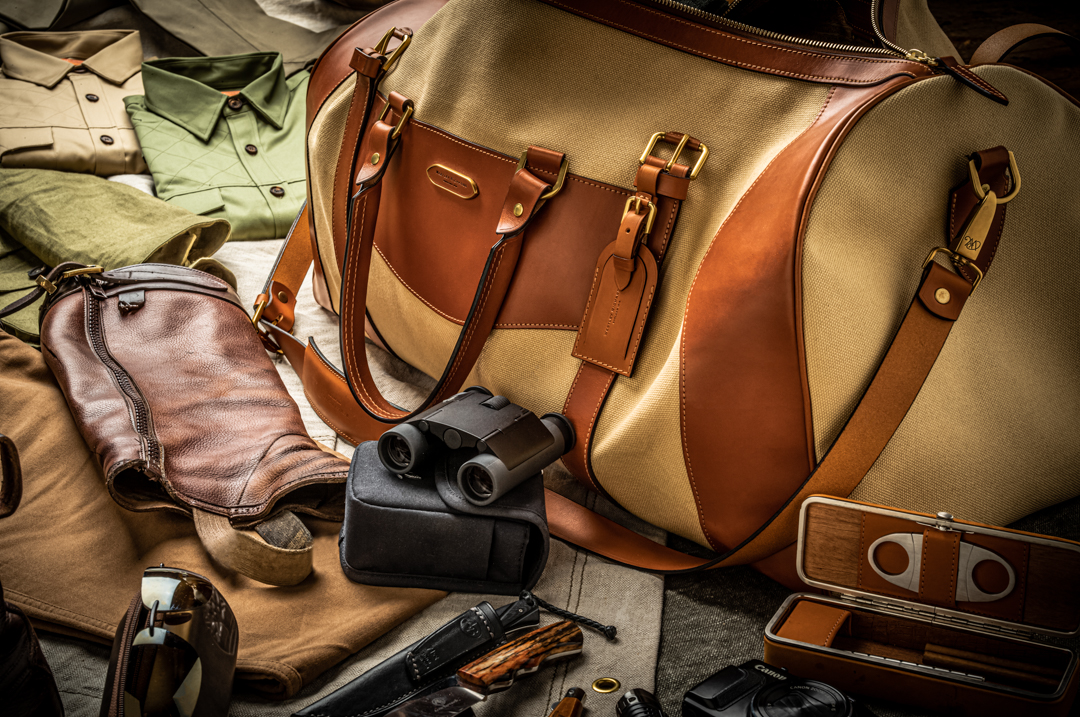
Packing for a safari in a country like Botswana requires a fairly minimalist approach. Flying to Johannesburg is straightforward but from there we take a charter to Maun and, though not as remote as my last safari in Tanzania, vehicle space is still limited and there is an imperative to economise on kit.
That being the case, I apply my default ‘three of everything’ rule to the basics: T-shirts, underwear, socks, trousers and shirts. The logic being that you wear one set today, with yesterday’s clothes in the wash and a clean set ready to get into after you have showered at the end of the day.
Also, one top coat or jacket, one belt, one pair of boots, one pair of camp shoes, two handkerchiefs, a snood, a wide-brim hat, a beanie, a shirt/jacket mid layer and a pair of gloves. A sweater or fleece is always a good idea as a cover-all extra layer.
In addition to the clothing list: a watch, a flashlight, a belt knife, a pocket knife, a lighter, paracord, sunglasses, binoculars.
A basic medical kit is sensible: surgical tape, eye drops, antibiotic eye gel, antibiotic cream, scissors, plasters, cotton wool pads, wound dressings, antiseptic liquid, stitching kit, super-glue. I have sustained eye injuries in Africa in the past, which became infected, in case you were wondering about my apparent over-indulgence in eye medication.
Luxuries include cigars in a travelling humidor, cutter, lighter and a bottle of Jameson’s whiskey.
With the list outlined in brief, decisions had to be made about what I already have and will re-use and what I need to buy. Before heading to Westley Richards, my outfitter of choice, I checked the presence and condition of some old favourites.
My Hoggs of Fife Rannoch boots are still sound and well-capable of another safari despite their advanced years. I always prefer to wear boots I have worn before, rather than risking new ones and finding them uncomfortable.
Despite being heavier than many people like to take to Africa. I like the protection the Rannochs offer and have confidence in them. I always team them with my old, leather, knee-length gaiters, which, I noted, need new elastic under the instep.
For socks, I take new pairs of Danish Endurance mid-calf, which have a blend of cotton and merino wool and seem comfortable in all weathers.
I have an old Westley Richards Selous jacket that I last wore in Tanzania, which will again be pressed into service. I will pack a couple of Westley Richards Ventile shirts, which are breathable and showerproof.
A Ripstop Huntsman over-shirt, which fills that shirt/jacket wardrobe gap, also makes the cut. It, sensibly, omits a right-side breast pocket, which makes shouldering a gun more comfortable and snag-free.
For travel, I will wear a Westley Richards Expedition Shirt. With this combination, I have all weathers and situations covered nicely.
Trousers that are tough enough to withstand the stresses of the bush, getting on and off an open-backed Land Cruiser repeatedly and which are a sufficient barrier to the inevitable Tsetse fly attention and mosquito bites that come with the territory, are essential, they also need to be cut loosely enough to allow air to circulate and feel comfortable all day long, whether sitting or standing.
Westley Richards Lyell moleskin jeans in fawn give the heavier weight all-round excellence that I need and the Safari Travel trousers are perfect for those really hot days. Long sleeves and legs are useful, as with all malarial zones, the Anopheles mosquito you need to worry about bites at dusk, so being covered while heading back to camp or sitting around the fire keeps you safe.
None of this kit is inexpensive but, in my experience, there is a great deal of satisfaction in knowing your kit will serve its purpose. Everything here is tested and approved – by me. I have been on safaris where my trousers have, literally, been torn to shreds after a day. When you are only carrying limited numbers of items, every one has to do its job for the entire trip.
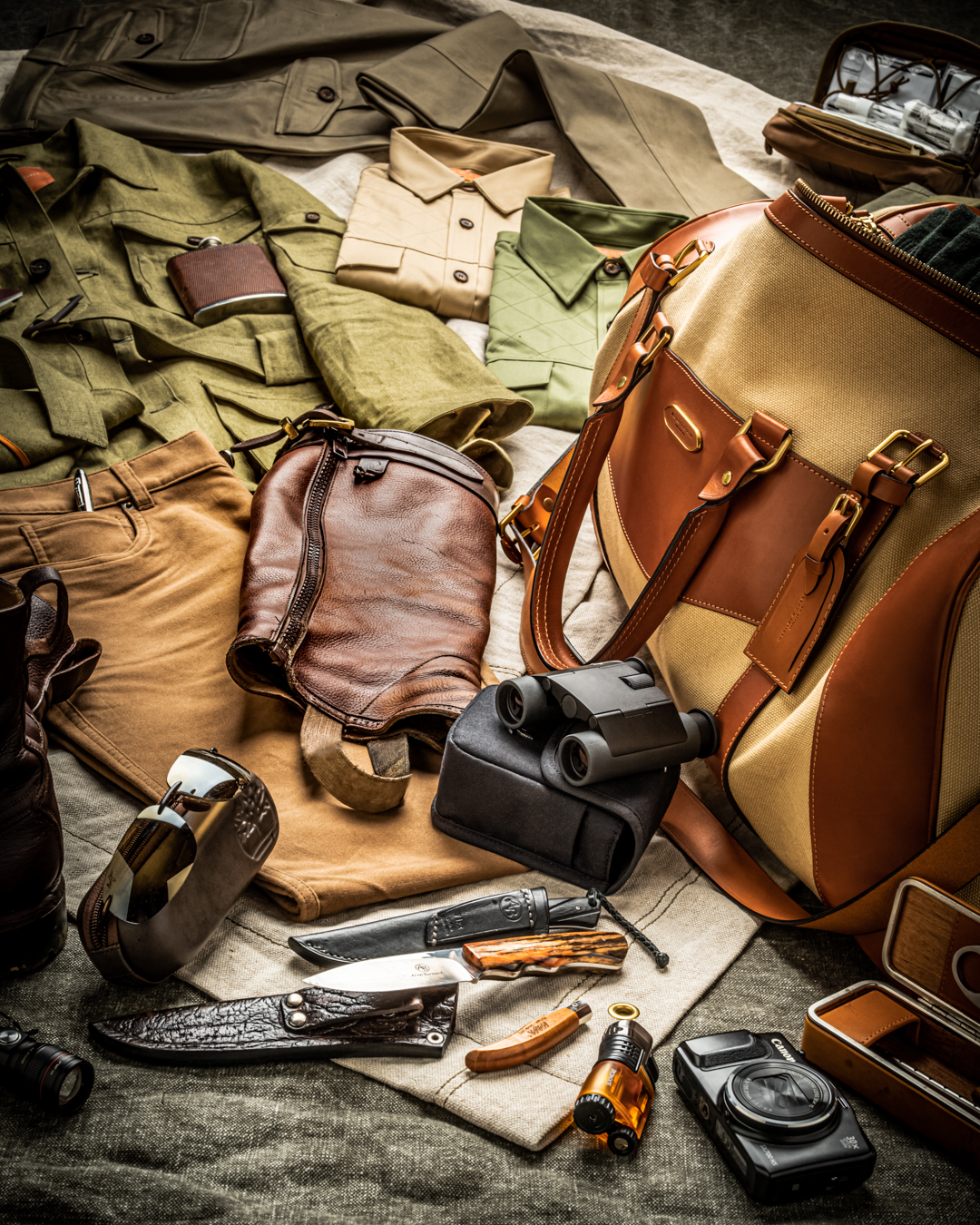
Westley Richards has made itself a one-stop-destination for anyone about to embark on a serious hunting safari. As an outfitter, it has carved out a niche for quality, style and durability that I have not found anywhere else to date.
When unsure about what to pack to fill that one spot where only the right garment will do, Westley Richards always comes up with the goods.
Speaking bluntly, I can’t afford everything for sale at the Pritchett Street showroom but I can afford some of it and the basics, though pricey, are worth the extra money for the superior fit and functionality.
Good binoculars are so useful on safari and I find a lightweight, small pair more convenient than a better resolution large pair, so will pack my compact Swarovskis, which will fit in a safari jacket pocket jut provide sharp focused clarity beyond what I will need for game spotting.
My knives are made by Arno Bernard. I have a medium belt knife and a smaller one, so whatever suits best is immediately available. A small Walther torch that provides a good beam with a small battery is sufficient for stumbling around camp after dark.
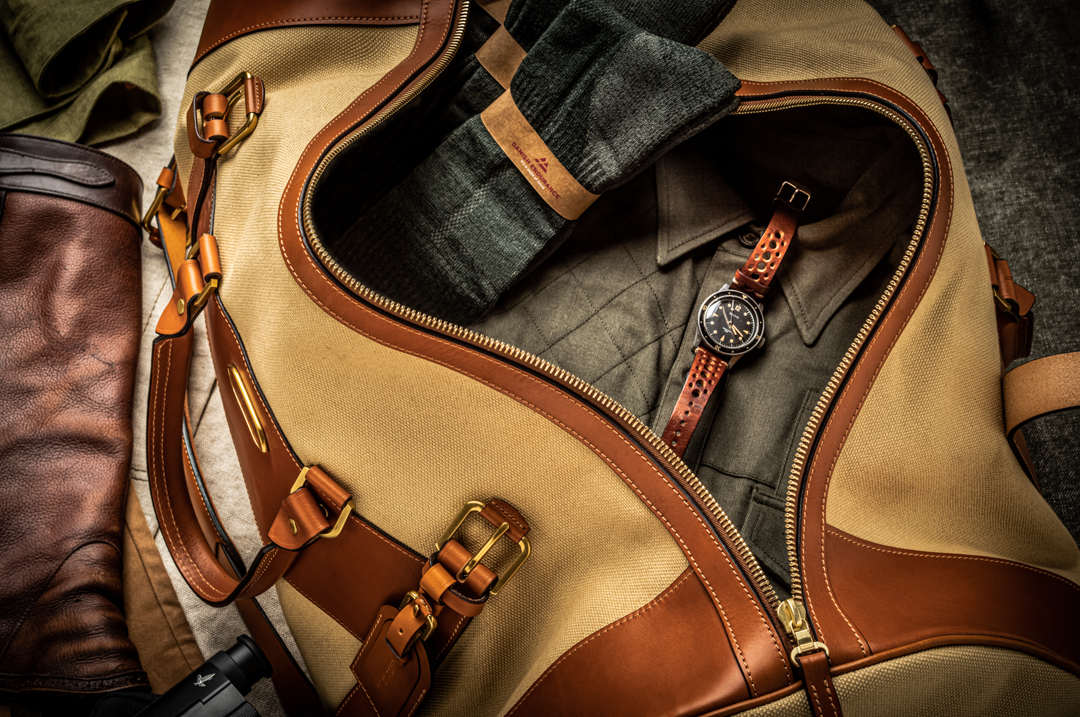
I will forgo my usual Rolex Submariner for the Baltic Aquascaphe that I bought for foreign adventure. It is a great, robust watch that cost about five hundred pounds, while the Rolex is now probably worth eight thousand and is too tempting a bait for anyone inclined to robbery or extortion.
If you are wearing sunglasses all day, they need to be lightweight and comfortable. I have a pair of Serengeti that I bought on an earlier trip. They are scratched, like most of my glasses, but should do for another trip. Likewise, my hats: I have a Westley Richards Safari hat and a Rambler from Lock of St James’s, both of which have made the trip to Africa before.
This mix and match approach works well, there is no need to buy an entirely new wardrobe but you do need garments that suit safari life better than most everyday build quality kit can handle. Any excuse to drop into the Pritchett Street showroom and see, try on and appreciate the range at Westley Richards creates an opportunity that everyone deserves once in a while.
Alongside its custom rifles, luxury travel bags and high quality country clothing, the modern Westley Richards continues a 200-year tradition of outfitting hunters and adventurers for the rigours of outdoor life. With an unrivalled heritage of safari wear, the company produces a range of luxury safari clothes for the ultimate safari packing list. Inspired by former clients Ernest Hemingway and Stewart Granger each safari jacket, hunting shirt and cargo trouser reflects Westley Richards ethos of timeless style and exceptional quality. Pair a rugged safari shirt and safari shorts with some world famous Courteney boots and a classic safari hat.












